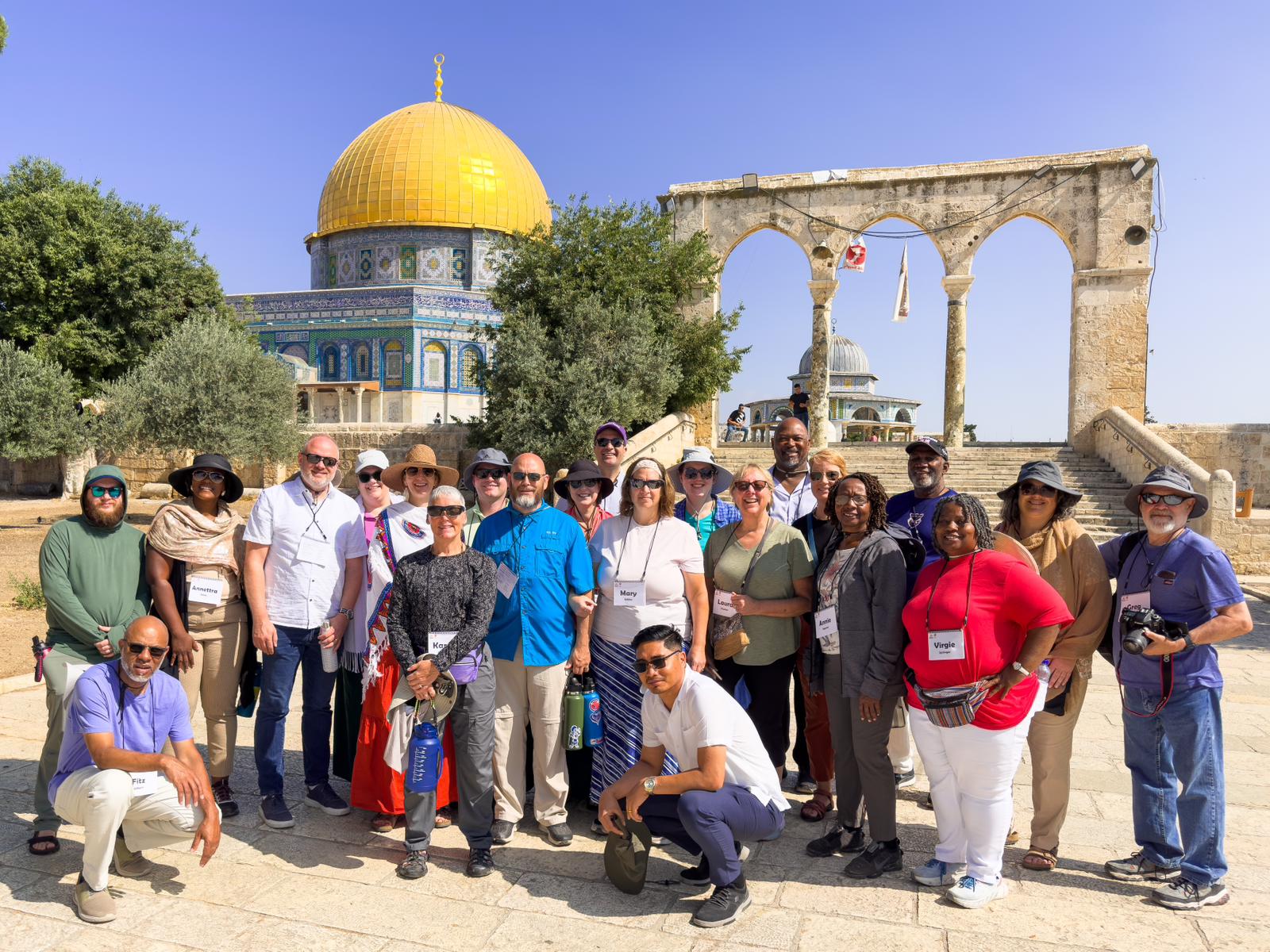When we bring a group of rising Christian leaders to Israel through the Stand and See Fellowship, we take them almost immediately to the Mount of Olives, which overlooks Jerusalem’s Old City and the Temple Mount. We sit in a semicircle and pause to imagine the generations of pilgrims who had traveled from around the world to be right where we are. We then go through an exercise, reflecting upon our baggage – what we are leaving behind and what we are bringing with us. Then, Rabbi Brad Hirschfield teaches a piece of commentary, a Midrash, that invariably takes my breath away, not only from that physical vantage point but also because of the emotional vantage point and the way in which I can sense that our ancient wisdom is also of inspiration to the Christian clergy with whom we are journeying.
The Midrash suggests that no matter how many people came to the Temple on a pilgrimage – a thousand, a hundred thousand, a million – the Temple Mount would expand to fit them all. It was at once a clearly defined physical structure and one that could transcend physicality and create emotional and spiritual space for anyone who sought it out. A miracle, indeed.
Yet the Midrash comes in juxtaposition to some of the Talmudic wisdom that rises out of this week’s Torah portion, Parshat T’rumah (Exodus 25:1 – 27:19). The Torah portion focuses on the building of the Tabernacle, the portable precursor to the Temple, at which the Israelites could experience greater closeness to God.
While the Tabernacle was intended for human use, it was of Divine inception. We read in Exodus 25:9:
Exactly as I show you—the pattern of the Tabernacle and the pattern of all its furnishings—so shall you make it.
Our sages in the Talmud then derive from it the notion that the city of Jerusalem could not be expanded without convening the full Sanhedrin of 71 judges (BT Sanhedrin 16b). They conclude, “Just as the Tabernacle was fashioned in all of its details according to Moses’ instructions, so too later, the Temple is fashioned according to the instructions of the Great Sanhedrin, whose members stand in place of Moses.”
Moses endeavored to communicate on behalf of God. The Sanhedrin endeavored to do so for Moses. Both sought to follow a clearly defined set of instructions for holy space. Jerusalem, like the Temple, like the Tabernacle, was bounded by seemingly infinite rules about its construction. Yet the goal of the structures was anything but stricture – rather transcendence and boundlessness.
We can reconcile disparate rabbinic teachings by understanding that boundaries are not always meant to keep us in but rather show us all that lies beyond, all that is limitless.
Infinite people could fit upon the finite structure of the Temple Mount because spiritual and emotional space cannot be delimited by physicality. The person who left home on pilgrimage and fell ill to the point that they were unable to travel on was still represented at the Temple. The person who could not afford to go was represented. The person exiled from the Holy Land was represented. The person who was not Jewish was represented.
The physical space of Jerusalem, the Temple, and even the Holy of Holies therein must be bounded physically, or it would cease to be a city at all. The grandiose builder or megalomaniacal leader could theoretically keep expanding it until it encompassed all of Israel or even the whole world. But in so doing, they would dilute the meaning of a space set apart for a higher purpose. The whole world cannot be Jerusalem. But the whole world can become spiritually connected to it.
Jerusalem has been a walled city since ancient times, with clearly defined, even emphasized limits. But its connections to every single other place on earth may well be described as infinite. And both finite and infinite reside in the design and purpose of the Temple and its precursor of the Tabernacle.

Joshua Stanton is Rabbi of East End Temple in Manhattan and the Director of Leadership Formation at CLAL – The National Jewish Center for Learning and Leadership. He serves on the Board of Governors of the International Jewish Committee for Interreligious Consultations, which liaises on behalf of Jewish communities worldwide with the Vatican and other international religious bodies.

